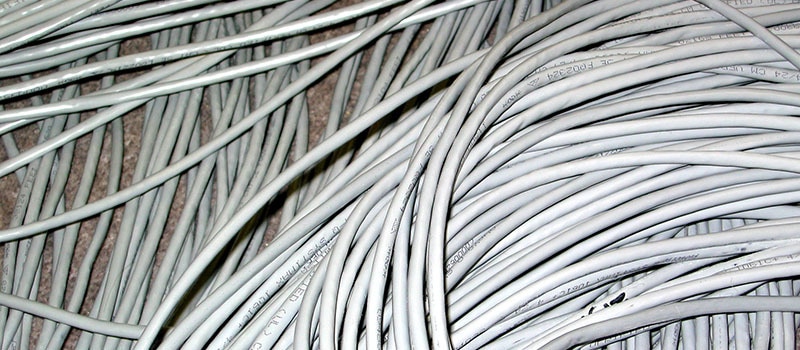Underwater Welding Battle: A Fight for Each Day
Last Updated on

I have a huge amount of respect for underwater welders.
Huge.
Why? Well, partially because of the courage they display in the face of risky endeavors like saturation diving and underwater cutting. But the risk is well-known in and outside the industry. In fact, it’s a little hyped-up in my opinion.
The bulk of my respect goes to the dirtier, oversimplified part of their job.
The daily grind.
What do I mean by that?
I’m talking about the challenging, problem-solving, working against the clock, communication mishap, labor-intensive daily grind.
It’s what separates the flyby-nights from the long haulers in underwater welding.
In today’s technology-focused world, you might expect underwater welders to have a computer or robot do most of their work for them. Though we’ve come a long way since the early days of professional diving, underwater welders still do a good deal of manual labor. After all, they’re the construction workers of the maritime world. A heck of a lot more can go wrong underwater than above it (besides falling to your death – gravity’s not a problem down here).
So what’s some of the challenges faced by underwater welders in this “daily grind”?
Underwater Physical Welding Challenges
Fatigue
I know I just preached about the danger stigma surrounding welder-divers’ careers, but fatigue is one area they can’t mess around in. It’s the most prevalent and dangerous force known to them. Fatigue maims and takes the life of more divers than all other forces combined.
It’s present on topside, as workers operate cranes for salvaging. It lurks its ugly head during a routine inspection of the water turbines in a dam. And any underwater welder who’s worked offshore on the oil rigs know fatigue with great familiarity.
The longer a diver pushes himself, the more fatigue pushes back.
To work as a welder-diver means you’ll encounter fatigue in most, if not all work situations. Though extremely dangerous to oneself, a tired diver also poses danger to others and, if constantly experienced, can burn out of this profession extremely quickly. It’s how we combat this force that can make all the difference:
Drunk Decision
Avoid the late nights drinking before a job. One of the symptoms of a hangover is fatigue, in addition to loss of focus, drowsiness and a plethora of other problems. There’s other ways to live it up without a glass of Grey Goose.
Anti-Zombie Technique
Track and manage your sleeping patterns. Try not to wake up during your REM sleep (dream stage), as your mind will take much longer to adjust, and you’ll feel that sense of “tired” without knowing why. It’s best to wake up at the beginning stage of sleep as your body reverts back. Train yourself. Download a sleep mobile application for tracking and setting alarms. Or use the old-fashioned spreadsheet or pencil and paper.
H2O Chug
Yeah, you probably spent the day in it. But water is to humans as oil is to a car – it keeps you primed and functioning. It also helps with digestion, which in turn boosts your energy levels. And unlike oil, about 60% of your body is composed of water, so take the water bottle with you wherever you go to replenish.
Awesome Eats
Eat proteins and complex carbs. I don’t pretend to understand the science behind food, but the right chow can bring power to your work life. On your next dive, bring some boiled eggs, canned tuna and trail mix for your bag lunch. These types of foods can keep you trim and sustain energy.
Unwind without Knots
Exercise. Not always a possibility, depending on the environment you’re diving in. But even some late night push ups and situps can get your heart pumping. Try a little yoga or stretching (when the guys aren’t looking). Or read a book – though Jules Verne’s Twenty Thousand Leagues Under the Sea is probably a bad choice.
Visibility

For divers, seeing is a privilege. Some underwater welders report that up to 90% of their construction work (or practice) is in slight to zero visibility conditions. These conditions can come as a result of the following:
- Stirred up mud
- Murky waters
- Sun’s reflection
- Absence of light
- Helmet fogging
If a diver is performing wet welding, most of their work be in shallower waters with more light penetration. But hyperbaric welding and construction under saturation diving conditions will take away the sun’s light entirely – welder-divers depend on artificial lights at those levels.
Not all of these factors can be controlled, especially Mother Nature. But welder-divers who put a heavy focus on variables within their control exhibit much more confidence and can do the work quicker. Here’s a few tips to enhance your kinesthetics.
Learn by Feel
No substitute exists for practice, especially with underwater welds. Weld coupons are the first step. Most underwater welders also practice in a tank, but visibility may or may not mimic your actual conditions. If you suspect you’ll be welding in little to no visibility, try a really simple technique: Close your eyes. Though intimidating at first, you’ll soon become comfortable working with your hands in complete darkness.
Hand-eye Coordination
Play video games. No, really. Video games (computer, mobile, console) improve hand-eye coordination, which in turn provides a better connection between your eyes and hands underwater. In the process, you train your mind to activate your fingers in more precise ways.
It may also have long-term benefits like increasing your intellect and social skills. As divers, we need every spare brain cell we can get. I suggest video games because most people love them. But several exercises exist as well:
- Practice sports (especially racket sports like tennis and ping-pong)
- Learn an instrument that requires hands (most instruments besides crazy ones like the didgeridoo)
- Juggling
Steadiness
If you didn’t learn Newton’s Third Law in junior high science class, now would be a good time. Topside welders have enough problems keeping a steady hand; underwater presents even more challenges. Working in a fluid means your muscles will work in constant adaptation mode. As you sense resistance from water waves, you must push back with just enough force to keep yourself steady.
Breath Deep
Don’t hold your breath to remain steady, that’s a bad idea. Instead, practice deep breathing before you put on your diving helmet. Pull air in through your nose, filling your diaphragm (the deep part of your stomach, closer to your groin). After 5-7 seconds, exhale out through your mouth. Repeat.
Limb Pulls
Stiffness can cause tension, and tension decreases muscle control. Relieve it by stretching. Start with the larger muscles, like your shoulders and upper back. Then stretch progressively until you reach your hands. Slowly pull back each individual finger, just enough to release tension. Do this for each hand.
Stress balls
Stress balls or “strength balls” provide an easy outlet for this exercise. A steady hand is a strong hand (cue the sex jokes). Squeeze slowly, in and out, throughout the day. Before you know it, you’ll be crushing apples and ripping phone books.
Pressure
This life is like a swimming pool. You dive into the water, but you can’t see how deep it is. – Dennis Rodman
Descending to only six feet underwater, you can experience problems with pressure. If you descend too quickly, the 2.7 psi difference can partially tear your eardrum and burst some of the blood vessels. The deeper you go, the more health problems that can arise. Decompression sickness is the most well-known.
Besides potential health problems, changing pressure can cause mild to intense vertigo.
Most underwater welders learn the science behind what changes in pressure do to their bodies, but knowledge is rendered useless without proper application.
Ear Equalization
Instructors teach underwater welders the Valsalva Maneuver (pinching nose and blowing out), but I recommend the Toynbee Maneuver (swallowing, not blowing). With lots of practice, you can can may achieve constant equalization with the Voluntary Tubal Opening.
Focus & Patience
If you go far enough down to require decompression on the way up, you have complete dependency on surface communication. Pay attention to all of their instructions. Think quickly on your feet/fins, and run through some scenarios before you dive so that you can react to emergency situations with intellectual instinct, not stupid step-by-step.
Communication

As a welder-diver, you’ll always work with surface supplied equipment. This means your jobs will begin and end with surface communication. Though scuba divers often use sign language, you’ll do most of yours through other methods:
- Voice Communication
- Video Communication
- Line Signals (rope pulls)
- Tap Codes (for use in closed off, pressurized chambers)
On the job, an underwater welder who performs according to standards without incident probably communicates good. But you want the best communication possible – the clearer your assignment, the better you can demonstrate your skills.
Know the Newbs
Get to know the person(s) you’ll be communicating with. Ask a few questions about themselves, and not just involving diving. The better you understand each other on land, the easier your job will go underwater.
Ego Deflation
Don’t throw your qualifications around like you own Thor’s hammer. Your surface communicators may not have your experience, but their role is just as crucial as yours. Obviously, you don’t want to downplay your experience either, but that’s usually not a problem among divers. Just speak with humility.
Laugh a Little
Underwater welding and similar jobs mean you’ll deal with some tension and stress. While communicating, it’s okay to throw a joke in here or there. Just no momma jokes – that will put you back to square one.
Underwater Welding Psychological Challenges
1. Confusion

Parts of the maritime industry are shrouded in mystery. It’s part of the pull – adventure into the unknown and all that jazz. But it also means that you may not have a clue to what your dive assignment actually entails until you reach the job site. This unfortunate truth compels a “sink or swim” mentality. You can fight this with bitterness and resignation, or you can become proactive:
Q&A For All
Pretend you’re back in dive school among the newbies. Since every dive project differs in size and scope, you must clarify your assignment every step of the way. This mentality isn’t easy – you’ll find that your fellow divers and even project leaders may ridicule you for it. But they probably have the same questions you do, and it’s better to find answers before you start than fix a mess-up.
Find and Seek
Look for people who know what they’re doing. Someone with older divers who have more experience. They may not be the project leader, either. Befriend them, and seek clarification along the way. Just don’t make it a me-and-my-buddy clique.
Metaphorically Speaking
I know, you didn’t go to dive school to write poetry. But metaphors help us understand everything better. That includes the floating Grand Canyon you have to put back together.
2. Fear
Fear stifles our thinking and actions. It creates indecisiveness that results in stagnation. I have known talented people who procrastinate indefinitely rather than risk failure. Lost opportunities cause erosion of confidence, and the downward spiral begins. – Charles Stanley
I couldn’t say it better. Fear and panic can cause the most capable underwater welder to freeze up, or act rashly in an emergency. And then there’s the fear of fear, which causes problems on day-to-day activities.
What if?
An important question, but you can’t dwell on it all the time. Get the “what ifs” out of the way before you start your project. Under the water, it can only cause delays, danger and other problems.
Fear, like other psychological problems, is managed, not fixed. That means it will always be present, but you can minimize its effect.
Breathing
You remember that breathing technique I told you about earlier for focusing? You can practice the same thing here.
What your brain feels, your body will exhibit through symptoms. But the brain-to-body connection also works in reverse. Use the 7/11 rule – breathe in seven, out eleven seconds. It has a calming effect that takes a few minutes to kick in.
Intellect over Emotion
Fear feeds off of high energy, anxiety and emotion. So try to pull away from those triggers. Try rating your fear on a 1-10 scale; even the act of doing this allows the logical side of your brain to take over. If you can’t stop thinking about your dive project, focus on the numerical portions: Do I need a 1/8 or 5/32 weld diameter here? Is my depth at 12 or 13 feet?
Counsel
Don’t think of counselors as “if all else fails” go-to’s. Counselors give guidance, and they want to help you overcome your fear. Set up an appointment in person, and then speak with your counselor on a regular basis until they feel you’re able to manage the fear on your own. Your schedule may not always allow an in-person visit, but most counselors will work with you and could even Skype.
Loneliness

We assume underwater welders don’t have it – after all, they wouldn’t choose this profession if they did. But life at sea can take a huge social toll on individuals.
Inland underwater welders usually don’t face this problem head on; they usually work within driving distance from friends and family. But offshore work means days, weeks, even months without seeing people you care about. It’s part of the reason you receive higher pay. Regardless of where you are, you can battle your loneliness.
Don’t Detach
In your off hours, don’t give into temptation to isolate yourself. Hang out with other people who share your interests on the job, and get to know them on a personal level. Even if you don’t “connect” right away, social interaction will give you energy to combat feelings of isolation.
Draw up a Plan
Underwater welders make good money executing plans. You can do that on a social scale as well. Write down the four people who you care about most (ranked accordingly). Then, add a fifth person: Someone you want to know better.
Afterward, look at your calendar to see when you could spend time with these people. Contact each one and ask what days of the week or month would work well to hang out. Make sure you’re diligent about setting up a time, and then commit to it as your schedule allows.
High Generosity, No Expectation
People aren’t ideal. Don’t come into a group conversation expecting them to focus their attention on you or what you have to say. Keep your expectations of attention low, and think about others first.
Also, generosity and kindness can break down just about any barrier. Take some beef jerky or trail mix to the dive site and give some out to everyone. And on your way out, thank your project leader with a handwritten note. You’ll kill two birds with one stone – battling loneliness and improving your professional network!
Know your limits
Some welder-divers aren’t cut out to make a splash in the offshore world. If that’s you, recognize it and move to a place with more meaningful social interaction. Better to learn your lesson quickly than linger in a position of emotional emptiness.
Ask others
Find a diver you can confide with and talk about the loneliness you feel. If they’ve worked in a similar environment for long, they’ll be able to identify and empathize with your situation. Ask how they dealt with it, and determine if you should try something similar.
Troubleshooting
If you struggle with finding solutions to mechanical and maritime problems, don’t think you’re alone. I’ve written a whole guide for people who aren’t born with the “mechanically minded” gene. In the meantime, if you don’t know what you’re doing, find someone who does. For welding issues, you can find many written and visual resources for you to fall back on.
Final Thoughts
I’ve by no means covered everything an underwater welder goes through, but these are the highlights (or lowlights). Challenges exist on every job, and unpredictability is rampant. But that’s part of the reason we’ve chosen this gig – everyday brings a new set of tasks. Just don’t attempt it alone!
What do you battle with on the job? Let me know in the comments section!
